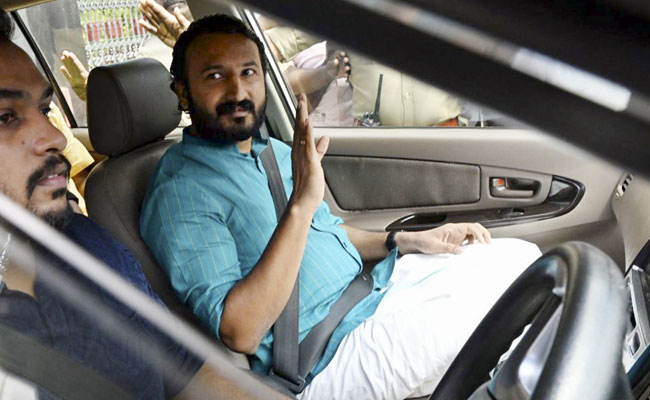Pluralism is India’s pride. India has identified itself as one nation with one flag retaining its diversity. It was not formed on the basis of one culture and one language. India announced itself as a Republic by recognizing its diverse languages, culture, religions, and traditions. It is true that while we are all Indians, at the same time, we are Kannadigas, Tamilians, or Keralites as well. We can become true Indians only by retaining our Kannada identity and not by giving up the Kannada identity. India is a melting pot of many languages and cultures. If we discard our languages and cultures, there will not be anything left to be considered Indian.
With this being the case, attempts are being made extensively over the past decade to dent the plurality of India. The Sangh Parivar has been working systematically in the back end to impose one culture and one language and destroy the diversity of India. States are expressing outrage that the Union Government is spearheading this project. But it is not the first time that states are being pressurized to accept one language. Now, attempts are also being made to equate the culture of India into Vedic culture. North India is trying to ride over South India by replacing Indian symbols with Vedic symbols. A new narrative that acceptance of India means accepting all the impositions of North Indians is being pushed relentlessly.
Many Southern states are expressing their opposition to these developments. Ironically, this form of dominance is not limited to culture alone. It also extends to the fiscal relationship between the Centre and State with attempts being made to snatch the economic freedom of states. Southern states are facing harassment over their share of financial resources with the Centre backstabbing the states over GST. With states slowly losing their power to raise their voices against such attempts, they find themselves in a sorry state where they cannot even demand a fair share of their revenue from the Centre.
This is also the backdrop in which back door attempts are again being made to impose Hindi or Sanskrit through a trilingual education policy. Having already made everyone believe that Hindi is the national language, the Centre is making preparations to formally announce it and brand those who don’t know the language as ‘non-Indians’.
A sample of this attempt at language hegemony was witnessed in Delhi when a CISF officer asked Tamil Nadu MP Kanimozhi whether she is an Indian after she expressed her inability to understand Hindi and asked if the officer could speak to her either in English or Tamil. Her inability to speak in Hindi prompted the officer to question the MP’s nationality. The belief that all Indians should know Hindi seems to have made the officer ask the question. Whether this was a casual incident or the officer was innocent cannot be established. But it is true that as part of attempts being made to impose Hindi across the country, South Indians are being made to feel uncomfortable having to face such questions. If an officer has the courage to question an MP in this manner, imagine the plight of ordinary people.
Today, North Indians are being deliberately posted in railways and banks and customers are being deliberately made to learn Hindi instead of teaching the staff the regional language. In banks, Kannada Rajyothsava is not being celebrated in the same manner as ‘Hindi Day’. If a farmer from Karnataka goes to the main branch of a bank and tries to communicate in Kannada, he will not get an answer. On the contrary, he will have to face the wrath of the staff for having spoken in Kannada. Kannada medium schools are endangered due to the onslaught of English medium schools and Kannada is increasingly getting reduced as a spoken language. If the imposition of Hindi continues in this manner, Kannada may not even survive as a spoken language.
As it is, North Indians consider South Indians as pariahs on the basis of their colour, language, and culture. In the past, a BJP leader attracted controversy arguing that North Indians are not racists and defending North Indians, asking ‘Don’t we live with South Indians’? Union Home Minister Amit Shah’s attempts to celebrate Kerala’s Onam festival as ‘Vamana Jayanthi’ can be recalled here. Southern states are in the forefront of health, education, IT, BT, cinema, literature, and other fields. Kerala ranks topmost in health and education. Poverty and illiteracy are reigning in the Hindi belt of North India. Without learning Hindi, South India has not lost out on anything. At the same time, states like Uttar Pradesh and Bihar have not developed because of the Hindi language. In such a situation, why is the Centre imposing Hindi on Southern States? On the contrary, it should be made compulsory for people of all Hindi speaking states to learn at least one Southern Indian language. With this, North Indians can try to build links with Southern India.
Let the Truth be known. If you read VB and like VB, please be a VB Supporter and Help us deliver the Truth to one and all.
Thiruvananthapuram (PTI): A Special Investigation Team (SIT) has been constituted to probe a second case of sexual assault against expelled Congress MLA Rahul Mamkootathil, police officials said on Friday.
The SIT will be led by G Poonguzhali, Assistant Inspector General at the Police Headquarters.
The team also includes a DSP rank officer and sub-inspectors, officials added.
The second sexual assault complaint was received by the Kerala Pradesh Congress Committee, which it forwarded to the state police chief.
ALSO READ: Cong expels rape-accused MLA Mamkootathil from party's primary membership
Following this, the Crime Branch registered a case and launched an investigation.
Crime Branch officials said the email complaint contained only the sender's email ID and no other contact details.
As part of the probe, they have sent a reply email requesting that the complainant contact them and provide her statement.
The complainant has alleged that she was sexually assaulted under the false promise of marriage, a Crime Branch official said.
However, details such as the location and date of the alleged incident are not currently available to the police.
The SIT will attempt to trace the sender of the email and record her statement, which is crucial for further investigation, the officer said.
Mamkootathil was expelled from the Congress party on Thursday after a court here rejected his anticipatory bail petition in another rape case.
Police said he is currently absconding, and a manhunt is underway in Kerala and neighbouring states.





